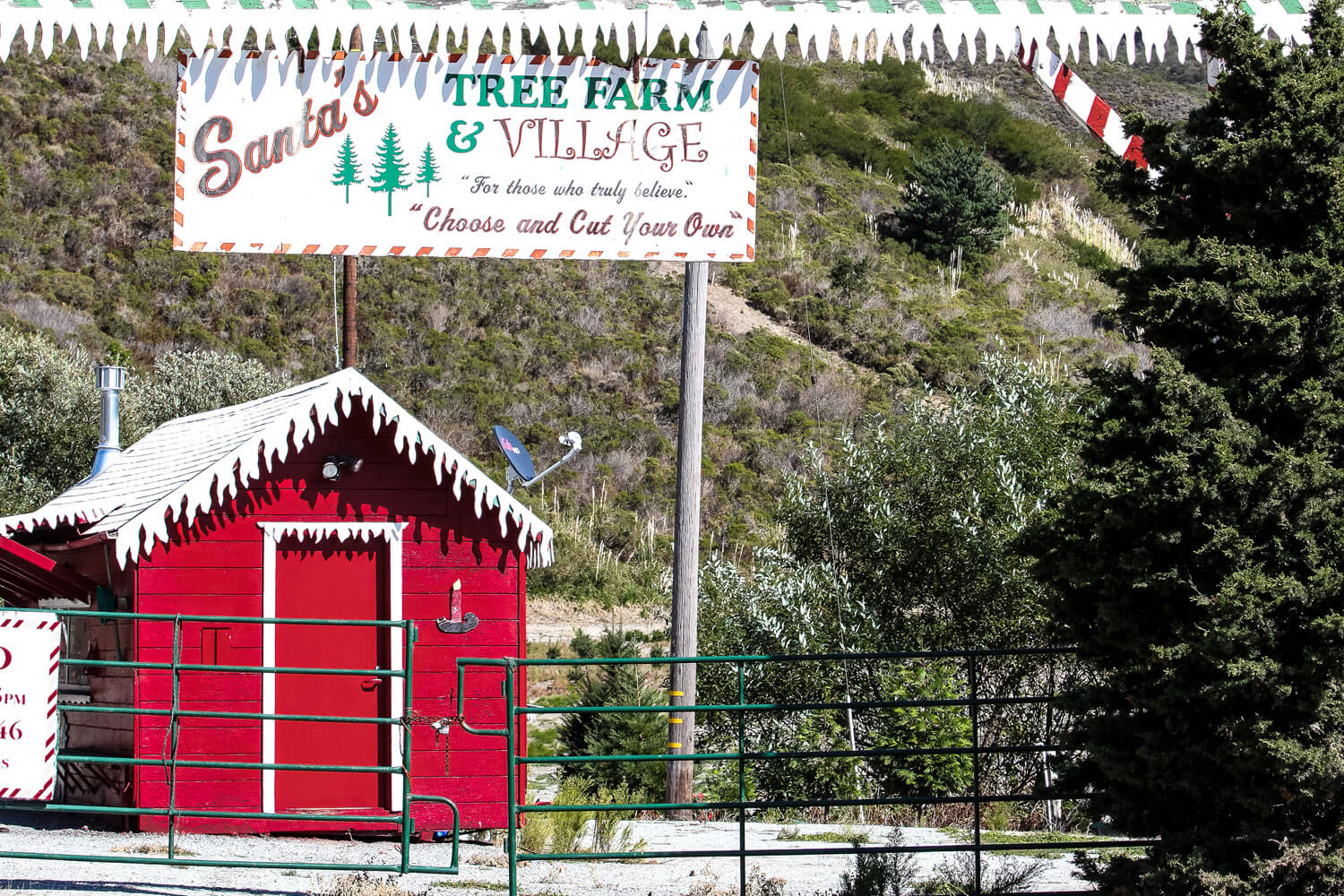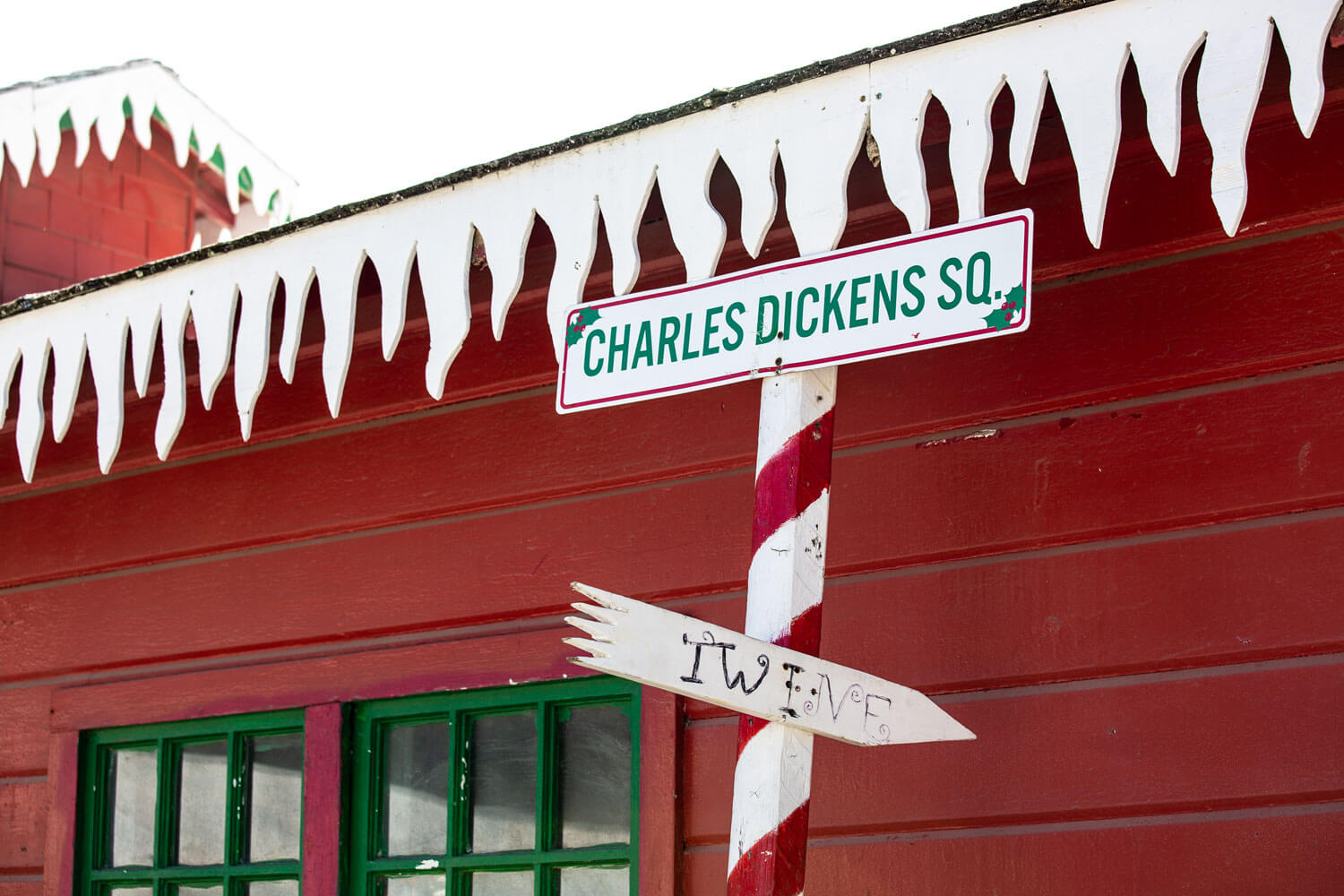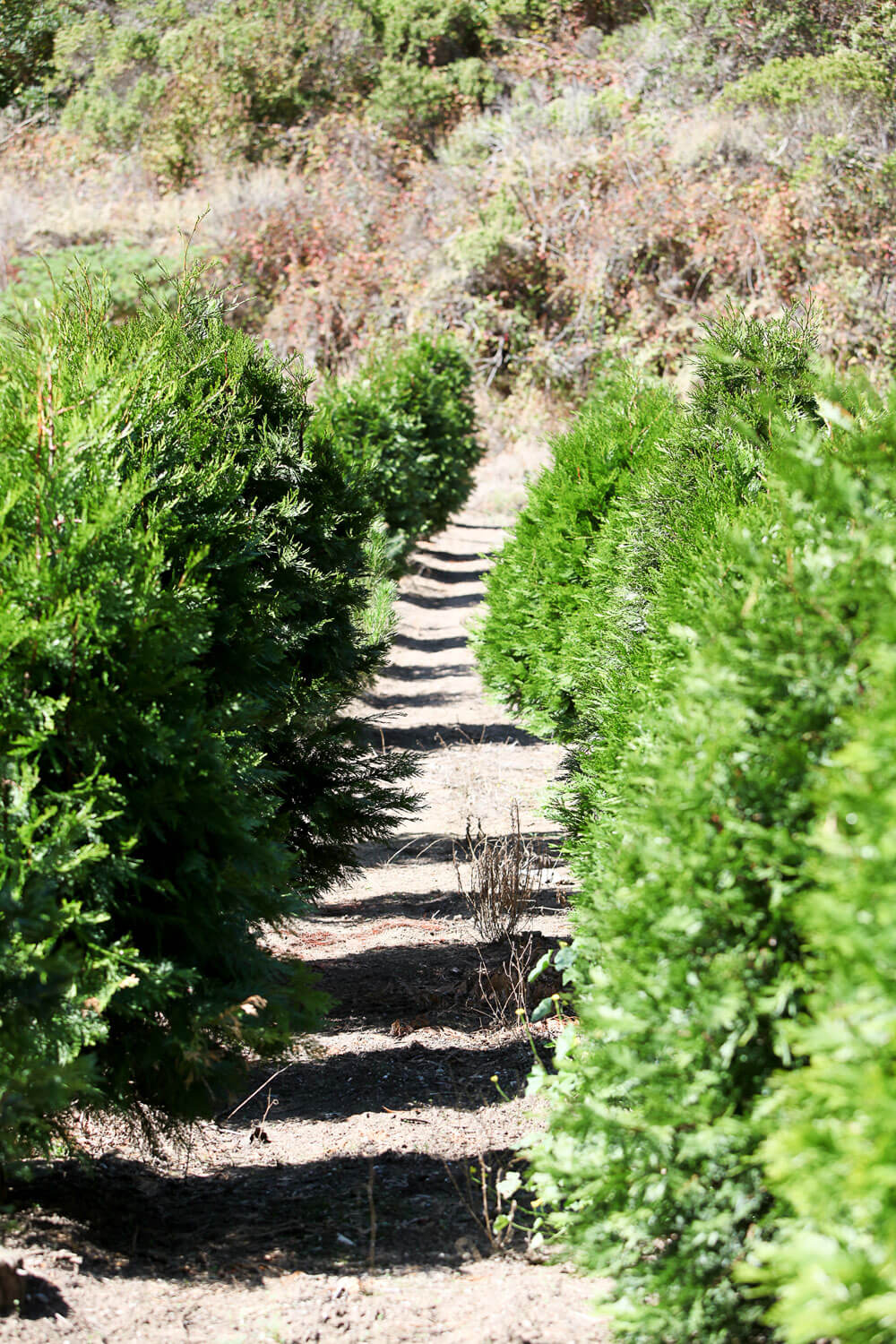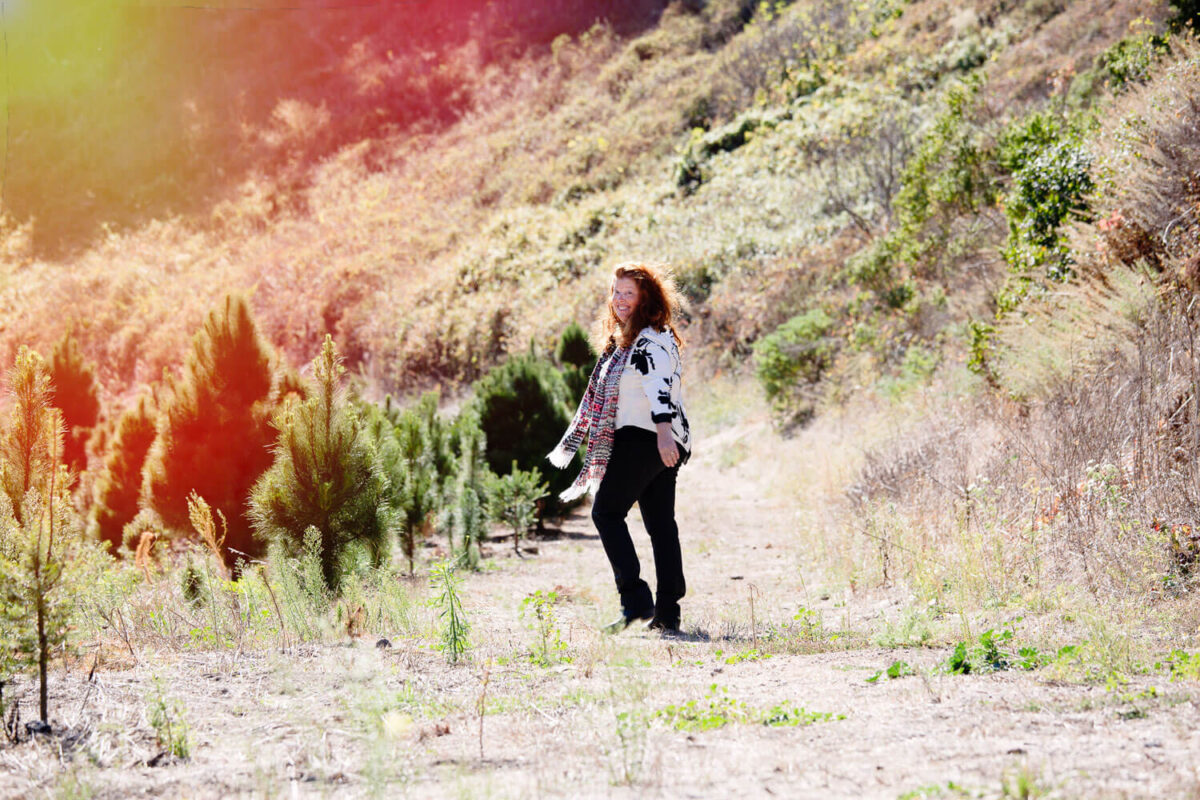During the off-seasons, Santa’s Tree Farm and Village is perceptively more relaxed. Save for the thousands of pines and firs bristling in the wind, not a creature is found stirring, not even a mouse. The Elves Workshop, located in the heart of this holiday hamlet nestled within the hills that roll into Half Moon Bay, is dormant—for now.
Santa is expected soon, arriving the weekend before Thanksgiving. Until then, this workshop stores his throne, stock loads of tree stands and twine and a motorized trolley train that was made using a repurposed airport baggage carrier. Further examples of homemade holiday craftsmanship are evident in every piece of snow-white trim that lines the building tops or the wooden red and white candy canes used as a handrail for a staircase.
A map of the village is posted outside on the workshop wall and from this perspective, Santa’s Tree Farm and Village looks like a golf course. The 487-acre farm includes 70 acres for six species of Christmas trees: Douglas, Grand, Concolor and noble firs, Redwood and Monterey pines. The property is split by Highway 92 where a sharp turn on a y-shaped intersection reveals a gravelly road leading into the village. A sign reminds visitors that this a choose-and-cut operation (saws and Christmas cheer supplied) with the welcoming motto: “For those who truly believe.”

When the first trees sprouted here in 1972 (originating in 1969 as a Future Farmers of America project), a dairy farm was transformed into a holiday village. Folks from every corner of the Bay Area flock here to spend an afternoon hunting for the perfect pine to build their Christmas around. They come with picnic spreads and an unwavering sense of the season, spending hours to indulge in the offering of hot cider and original puppet shows. The farm is free to roam and trees are priced according to species, not size, averaging between $60 and $75 each.
It takes a family to raise a village like this and that would be the Sare family. Dan grew up on the farm and planted Monterey pine Christmas tree seedlings in high school for a class project. Several years after establishing the business, he met Natalie from Pescadero, who answered a help wanted ad to work on the tree farm. They married in 1992 and their son, Mike, soon followed.
Today, the Sares run the Christmas village together. On a recent morning, Dan was out with his three full-time employees for maintenance on the various structures and to inspect this year’s crop of trees, which can take a dozen years to grow.
Since 2009, Mike has written a fresh puppet show using pre-recorded audio and hand puppets. Past favorite editions include “The Day Rudolph Went Missing” and “Santa Claus Who?” in which Santa develops amnesia and thinks he’s in a band. He also designs t-shirts for the village, finding one from a previous year that’s in forest green with the words “Christmas isn’t Christmas without Family” written in white.
Natalie answers the phone and runs the operations, coordinating with Mr. and Mrs. Claus’s PR for their arrival and organizing the 20 or so volunteers who help out on the busy pre-holiday weekends.
“This morning, I was talking to the mistletoe kid whom we’ve used ever since he was 12 years old,” she says. “I still want to support him because he’s so wonderful and hardworking. Now he’s getting ready to go off to college.”

When the gates open in late November, the village erupts with visitors through the weekend before the Big Day. That’s five weekends straight of holiday hustle. “We’ve been told we’re not just a place to go to but a destination,” Dan says. “A customer said it was like coming to Disneyland.”
Much of the property is open for visitors to explore and picnic at their leisure; a popular meadow for lunch is in the village’s North Pole, past the wooden Gumdrop Pass Covered Bridge and at the end of Candy Cane Lane. One area that’s private is the family home, a cream-colored one-story house with a brick chimney and a rain chain. A tree with ornaments and lights will soon decorate the living room and the Sares switch off each year who gets to choose it.
Instead of pen marks on the wall when he was growing up, Mike’s height was graded by the trees outside. “I’d say, ‘You’re about the same height as a three-year-old fir,’” Natalie tells him, and, like any 26-year-old, Mike smiles politely as his mom gushes with tales of his childhood.
The Sares keep in contact with other tree farmers and belong to several associations. Their trees are well respected in the field, receiving accolades from the California Tree Growers Association for their noble firs. They’ve won “Best Fir Tree” multiple years in a row. The coastal climate and terrain is suitable for growing these species but maintaining thousands of trees a year requires time and hard work.
The process starts on December 26 when they tally how many trees are missing and what to put back in. The first three months of the year are for irrigation, working alongside the rains, and in March they begin fertilizing. By summer, they’re pulling weeds and pruning the bottom of each tree. “That’s labor-intensive work,” Dan says without a hint of fatigue.

Type “Santa’s Tree Farm and Village” into YouTube and you’ll find a grainy homemade video of a family on a tree hunt in December 1989 next to a compilation of media clips from throughout the years.
The farm attracts news stories and the Sares are sometimes called for their take on holiday trends. Recently, a reporter asked Natalie how the new line of artificial Christmas trees sold through Amazon is affecting their business. Rather than look at the downside, she takes a broader and brighter perspective. After all, this is a village for those who truly believe.
“They wanted to know if it took away from our customer base and it absolutely does not,” she says. “I think it’s helpful for the people who can’t get out to the tree farm. It’s all worth it as long as it’s satisfying the needs of people so they can celebrate Christmas.”


